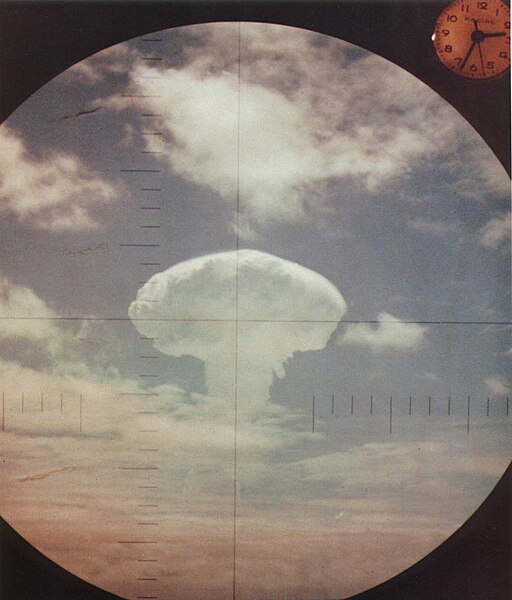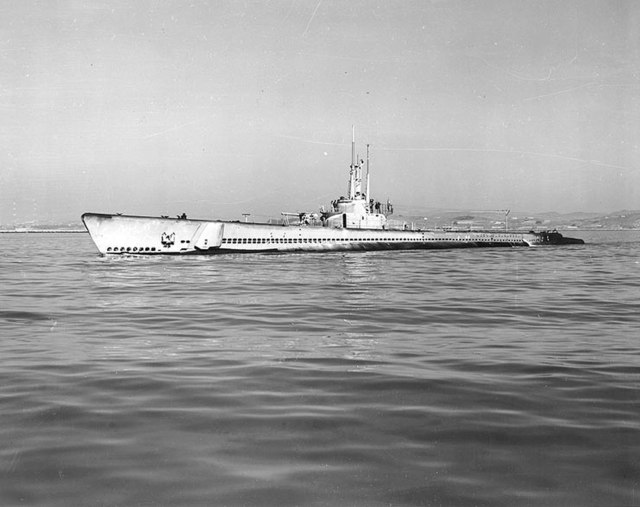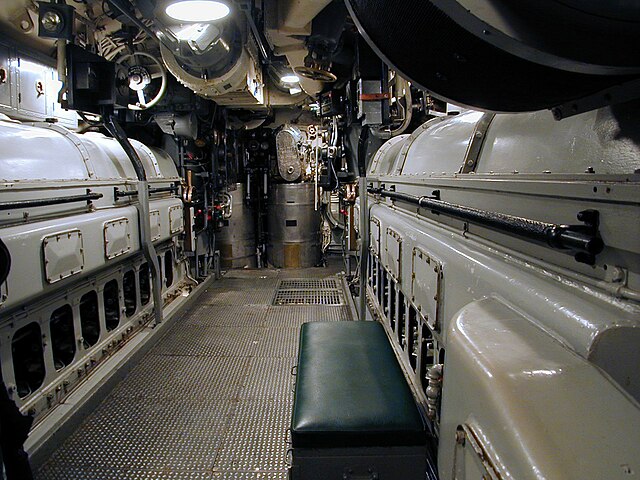USS Carbonero (SS/AGSS-337) was a Balao-class submarine, the first ship of the United States Navy to be named for the carbonero, a salt-water fish found in the West Indies.
USS Carbonero (SS-337) about to tie up inboard of USS Gudgeon (SS-567) at Pearl Harbor, c. 1963.
Shot Frigate Bird, 600 kilotons of TNT (2,500 TJ), as viewed from the submarine USS Carbonero. Only full-scale US test of a strategic missile system.
Montage of the end of Carbonero; sunk as a target by USS Pogy firing a Mk 48 torpedo off Pearl Harbor on 27 April 1975
The Balao class was a design of United States Navy submarine used during World War II, and with 120 boats completed, the largest class of submarines in the United States Navy. An improvement on the earlier Gato class, the boats had slight internal differences. The most significant improvement was the use of thicker, higher yield strength steel in the pressure hull skins and frames, which increased their test depth to 400 feet (120 m). Tang actually achieved a depth of 612 ft (187 m) during a test dive,
and exceeded that test depth when taking on water in the forward torpedo room while evading a destroyer.
USS Balao in 1944
Scheme of USS Pampanito (SS-383)
General Motors Cleveland Model 16-248 diesel engine
Fairbanks-Morse Model 38D8⅛ diesel engine







